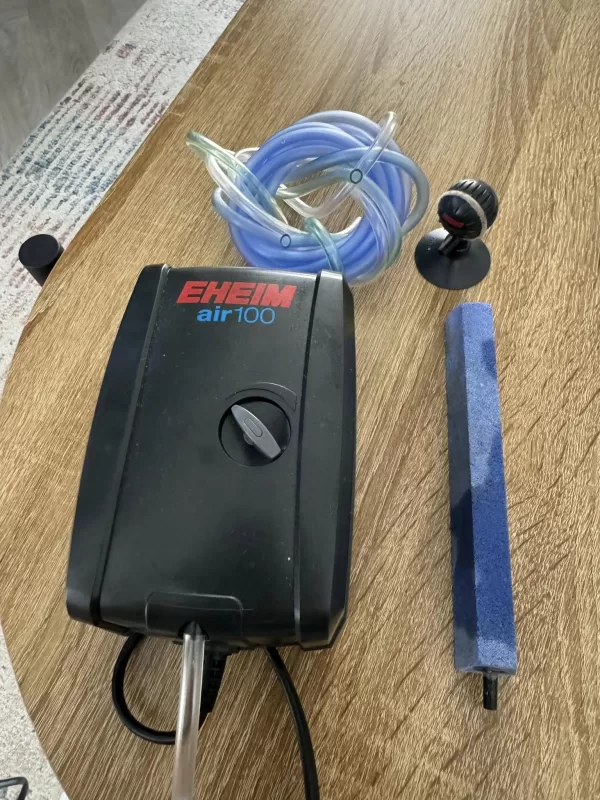Troubleshooting Your Aquarium Air Pump: What to Do When It’s Not Pumping Air
Table of Contents
- How does an aquarium air pump work?
- Why is my air pump not pumping air?
- Could it be a clogged air stone or tubing?
- Is the diaphragm inside the pump damaged?
- Is the tubing loose or disconnected?
- How do I troubleshoot my air pump step by step?
- Should I repair or replace my air pump?
- How can I keep my air pump running smoothly?
- What should I do if my air pump stops working?
How Your Aquarium Air Pump Works (And Why You Should Care)
Alright, let me level with you—air pumps are kind of the unsung heroes of your aquarium. You might not think about them all that much (until they stop working), but without them, your tank turns into a stagnant mess. I mean, your fish and shrimp? They are not going to thank you if they are left gasping for air. Been there, done that, and it is never fun. So, if your air pump decides to take an unexpected nap, do not worry. I have been through it more times than I care to admit, and I have got you covered.
Now, let’s get into it. Why is your air pump acting up, and more importantly, how can you fix it?
Common Reasons Your Air Pump Is Not Pumping Air (And What You Can Do About It)
There are a handful of usual suspects when an air pump gives out. I will be honest—sometimes it is the simplest things that get you. I have had moments where I thought my pump was toast, only to realize… well, let us just say I could have saved myself some panic.
1. Clogged Air Stone or Tubing
Now, this is the big one. Your air stone or tubing can get clogged up with gunk—biofilm, minerals, algae, you name it. I once let an air stone sit in a tank for, oh, about six months without checking it. Bad move. That thing was so clogged, it was like trying to breathe through a sock.
What to do:
Pull that air stone out, and give it a soak in vinegar for a couple of hours. It breaks down mineral buildup like a charm. Rinse it off well before putting it back in your tank. If it is too far gone (you will know if it is barely bubbling), go ahead and replace it. You can grab one of these air stones on Amazon.
2. Damaged Diaphragm
Here is where things get a little more technical. The diaphragm is that little rubber piece inside the pump that does all the heavy lifting. If it tears, it is game over for your airflow.
What to do:
Unplug your pump, open it up, and take a look at the diaphragm. If it is cracked or ripped, you will need to swap it out. Do not worry—it is an easy fix, and you can find replacement diaphragms here. The first time I did this, I felt like a DIY champ. It took me all of ten minutes, and my pump was good as new.
3. Loose or Disconnected Tubing
Now, I am not proud of this, but I have had entire “pump failures” only to realize the tubing came loose. It happens! One little wiggle, and the air stops flowing.
What to do:
Check the tubing. Make sure everything is snug—where it connects to the pump, the check valve (if you have one), and the air stone. If the tubing looks worn or cracked, it is time for a new one.
Step-by-Step Guide: Getting That Pump Working Again
Here is the part where you roll up your sleeves and do some quick detective work. Follow these steps, and I bet you will have that pump running again in no time.
- Check the Power Supply
Okay, first things first—make sure the pump is plugged in, and the outlet is working. Sounds obvious, right? You would be surprised how often this gets overlooked. I have done it myself more times than I care to admit. - Inspect the Air Stone and Tubing
Take a close look at the air stone and tubing for any signs of blockage. Clean it out with a vinegar soak, or swap it out if needed. Trust me, this is a game-changer. - Check the Pump Placement
Your air pump should be positioned above the water level. If it is below, water can flow back into the tubing, and things will not work as they should. If moving the pump is not an option, use a check valve to stop backflow. - Inspect the Diaphragm
Like I said before, the diaphragm does all the heavy lifting in the pump. If it is torn or worn out, replace it, and you are good to go. - Listen for Air Leaks
Got a hissing sound? That means there is a leak somewhere. Check all the connections, and tighten them up.
Repair or Replace? When It Is Time to Move On
Alright, so maybe you have followed all the steps, and the pump is still not working. At this point, it is decision time. Do you keep repairing it, or is it time to let go and get a new one?
In my experience, if the pump is over three years old or constantly acting up, it is probably time to replace it. Pumps are not too expensive, and it is better to have peace of mind knowing your fish or shrimp are getting the oxygen they need. You can find some solid replacement pumps on Amazon.
Keeping Your Air Pump Running: Preventive Maintenance
The best way to avoid air pump issues is to maintain your equipment. Over the years, I have learned a few tricks to keep my pumps running smoothly.
- Clean the Air Stone and Tubing Regularly
Every few months, take out the air stone and give it a vinegar soak. Keeps it clean, and your bubbles flowing. - Store the Pump in a Dry Area
Keep it in a spot where it will not get splashed or soaked. I learned this the hard way when I left my pump on the floor next to a leaky tank. Do not be like me. - Replace Worn Parts
Diaphragms, tubing, and air stones all wear out over time. Have spares on hand so you are not scrambling when something goes wrong.
Wrapping It Up: You’ve Got This
Troubleshooting your air pump does not have to be rocket science. Sure, it can be frustrating when it stops working out of the blue, but in most cases, a quick check and a little elbow grease will have it back to normal. And if not? Well, there are plenty of good pumps out there to choose from.
I hope this guide helped you out! Let me know in the comments if you fixed your pump, or if you have any tricks of your own for keeping equipment running smoothly. And if you are in the market for a new pump, be sure to check out some of the great options we have in stock.
Got any air pump horror stories? I would love to hear them—leave a comment below! And if this guide helped you, feel free to share it with other aquarists who might need it.


